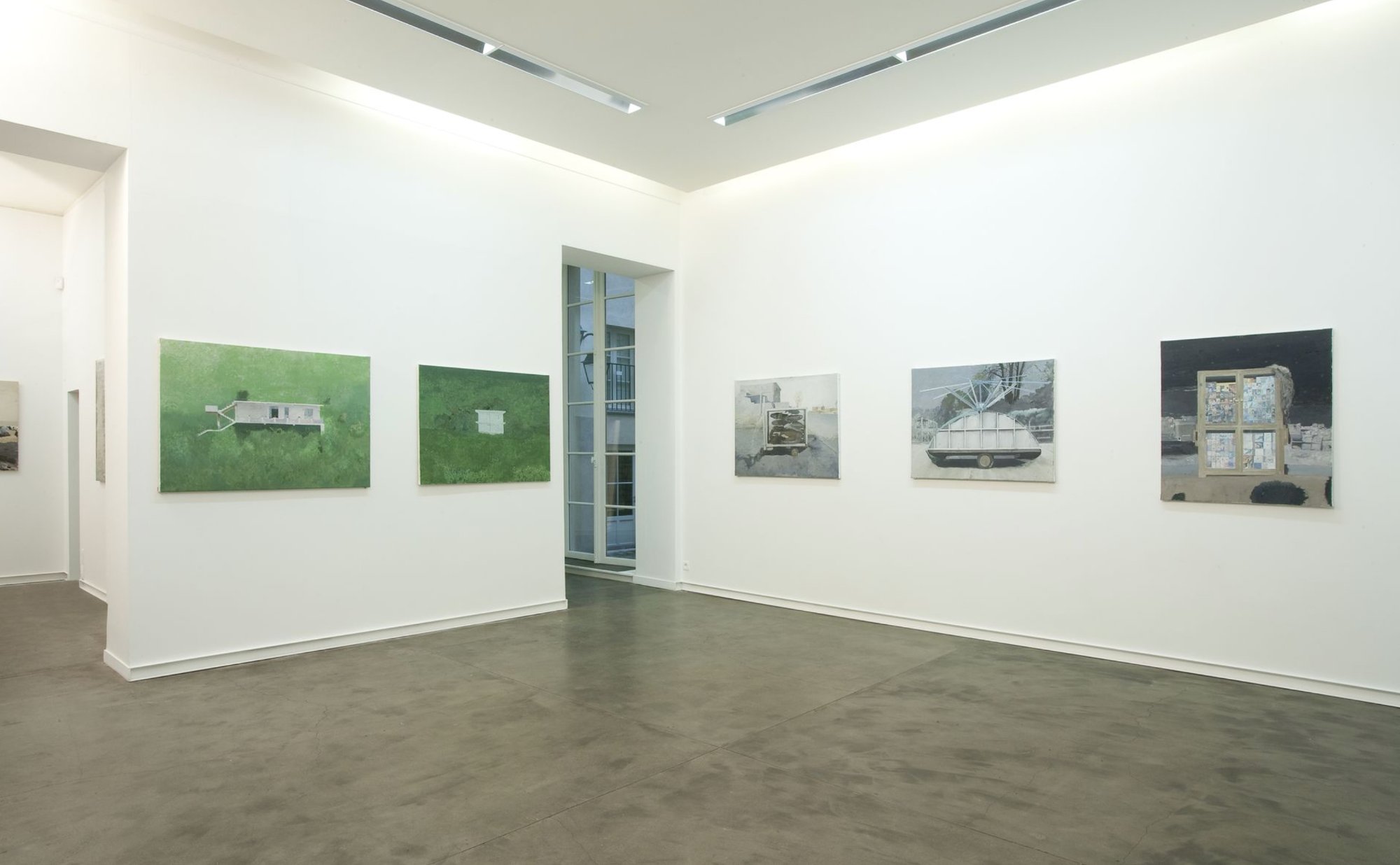Edi Hila / Transitionnal landscapes
Galerie Jean-Gabriel Mitterrand, Paris — January-March 2009

The European Balkan scene has seen the birth of many artistic personalities who have made their careers beyond national borders, and the Albanian case has no shortage of prominent protagonists such as Adria Sala or Adrian Paci. But in Tirana, the capital of Albania, lives and works Edi Hila, an exceptional personality who, in the few international events in which he has participated in recent years, has undoubtedly appeared as a major artist and probably the one of the most interesting painters of this early 21st century.
The artist was born in 1944 in Shkoder and his biography reveals the difficulties encountered by the artist for nearly 20 years. Accused of practicing a deviationist painting, Edi Hila suffered in the mid-70s, the throes of communist "reeducation" being banned and forced to work as a docker. In the 90's he was "rehabilitated" first to paint and then after the change of regime he benefited on several occasions from the attention of René Block and Harald Szeeman, curators who had arrived in Albania, and who later invited him to participate in several major exhibitions.
The works of Edi Hila are so many detailed looks that focus on a landscape in transition, a change not only political but deeply social. Like all the countries of the region, the state of transition is consubstantial with every detail of the relief that it is the countryside where the cities. From these abandoned architectures, marked nevertheless by the seal of modernism, the artist manages to highlight with impressive pictorial mastery, all their paradoxes and a veil of mystery seizes it. Likewise, he focuses on the entrepreneurial-type pragmatism of his fellow citizens who are trying to tinker with tools and do small business on the side of the road. A contemporary world that is also European, Balkan and at the same time strangely global, is declined in TV images, in street and indoor scenes, a world that has imploded, that is remade and tells the story, that upsets the durability of the landscapes, the brutalities inflicted but also the singularity of each corner.
By inviting Edi Hila after Ion Grigorescu, the JGM Gallery thus signs its second stop in the Balkans with the will to discover in France personalities apart whose quality of the work deserves the interest of the art world.
Ami Barak
